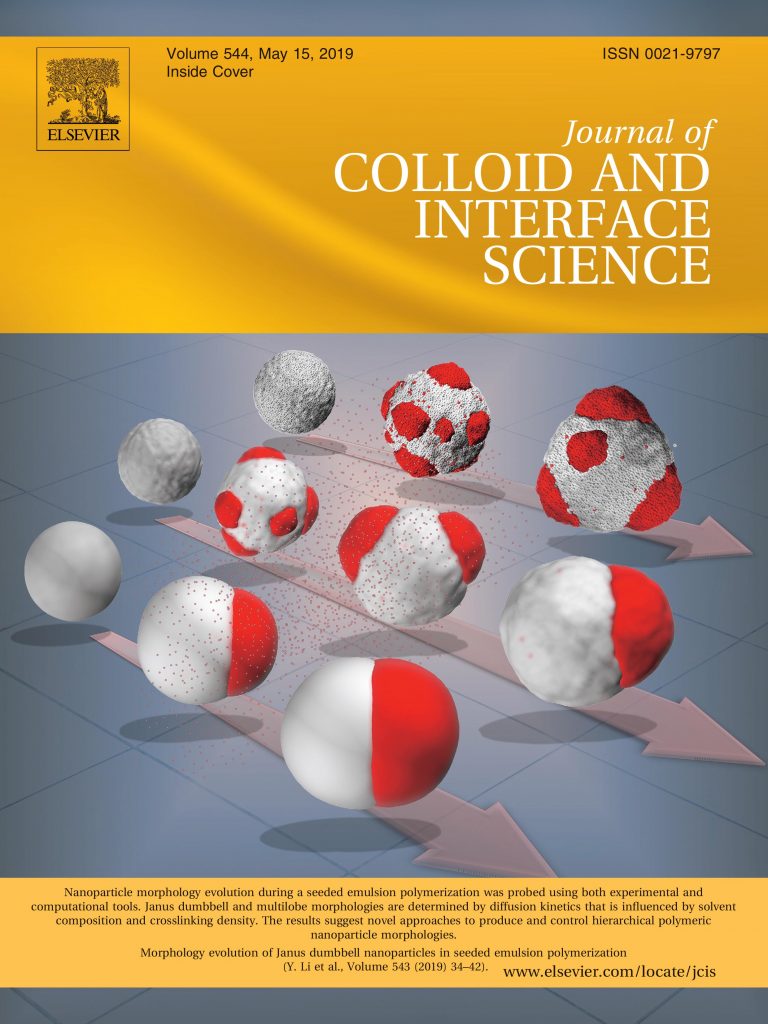
Shan Jiang, assistant professor of materials science and engineering, led a research group that discovered two variables that can be controlled to create certain types of polymers. The results appear on the cover of the March issue of the Journal of Colloid and Interface Science.
During the process of emulsion polymerization, various morphologies of polymer nanoparticles are created. By discovering how to control the type of polymer created in the process, Jiang’s team has enabled researchers to understand more about the fundamental process of emulsion polymerization, rather than continuing to run trial-and-error experiments. A collaborative computation study by Xin Yong’s group in Binghamton University, New York, further verified the principles discovered by experiment.
Members of Iowa State’s Department of Materials Science and Egnineering teamed up with the Department of Mechanical Engineering at Binghamton University in New York. Jiang and Xin Yong of Binghamton are the corresponding authors of the article. Yifan Li, Iowa State graduate assistant in materials science and engineering, and Shensheng Chen of Binghamton are co-first authors with equal contribution. Other contributions include those of Serkan Demirci, visiting assistant professor in materials science and engineering, Shiyi Qin of Binghamton, Zihao Xu and Emily Olson, Iowa State graduate assistants in materials science and engineering, as well as Fei Liu, Iowa State postdoctoral researcher in materials science and engineering, and Devin Palm, Iowa State undergraduate in industrial engineering.
The research team determined that two important factors could predict the morphology of the polymer created in the process: solvent used in seed synthesis and the crosslinking density of the polymers strands. By combining various conditions during the polymerization process, the team was able to obtain multilobe particles and Janus dumbbell nanoparticles. Together with the computer simulation, they obtained the knowledge of the variables that contribute to the formation of final polymer morphologies. The results may help guide the current commercial process of emulsion polymers. The understanding can even lead to production of new polymer nanoparticles, which are already widely applied in fields including drug delivery, cosmetics, coating materials and construction chemicals.
